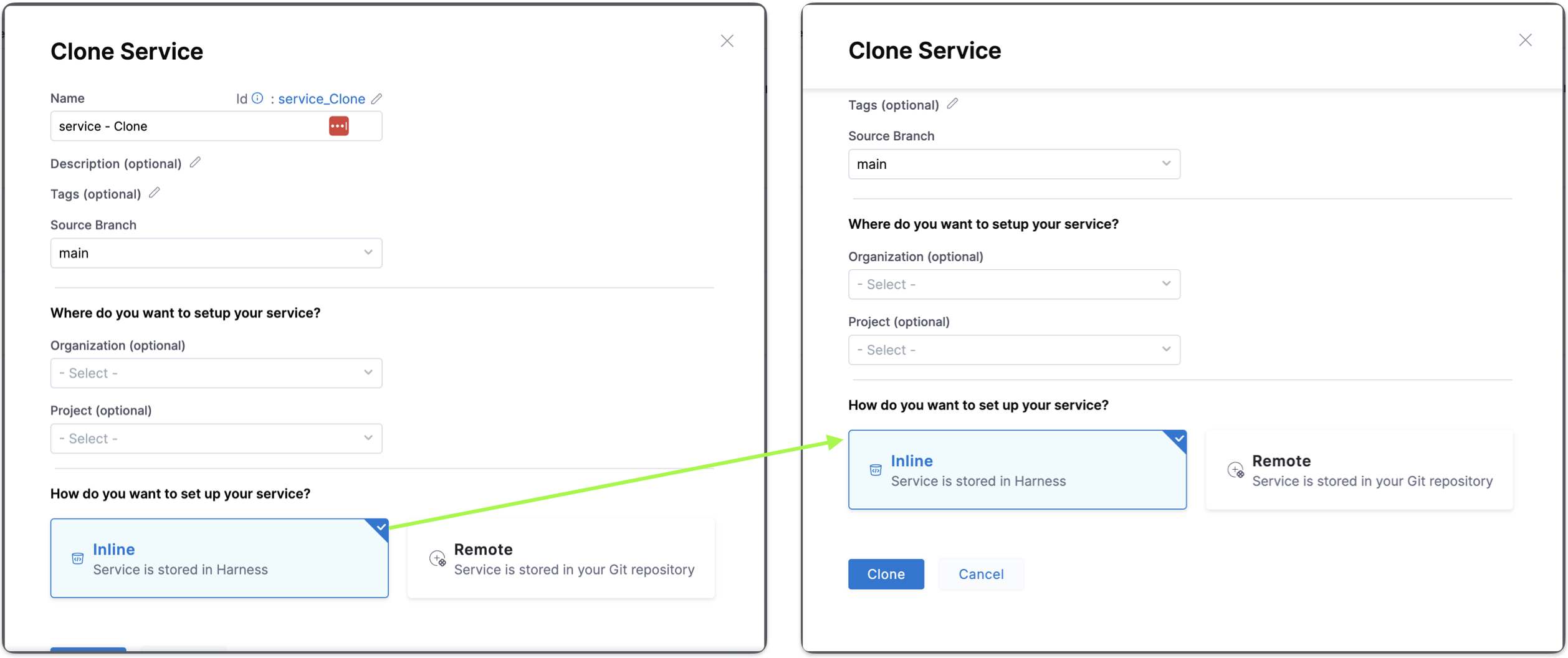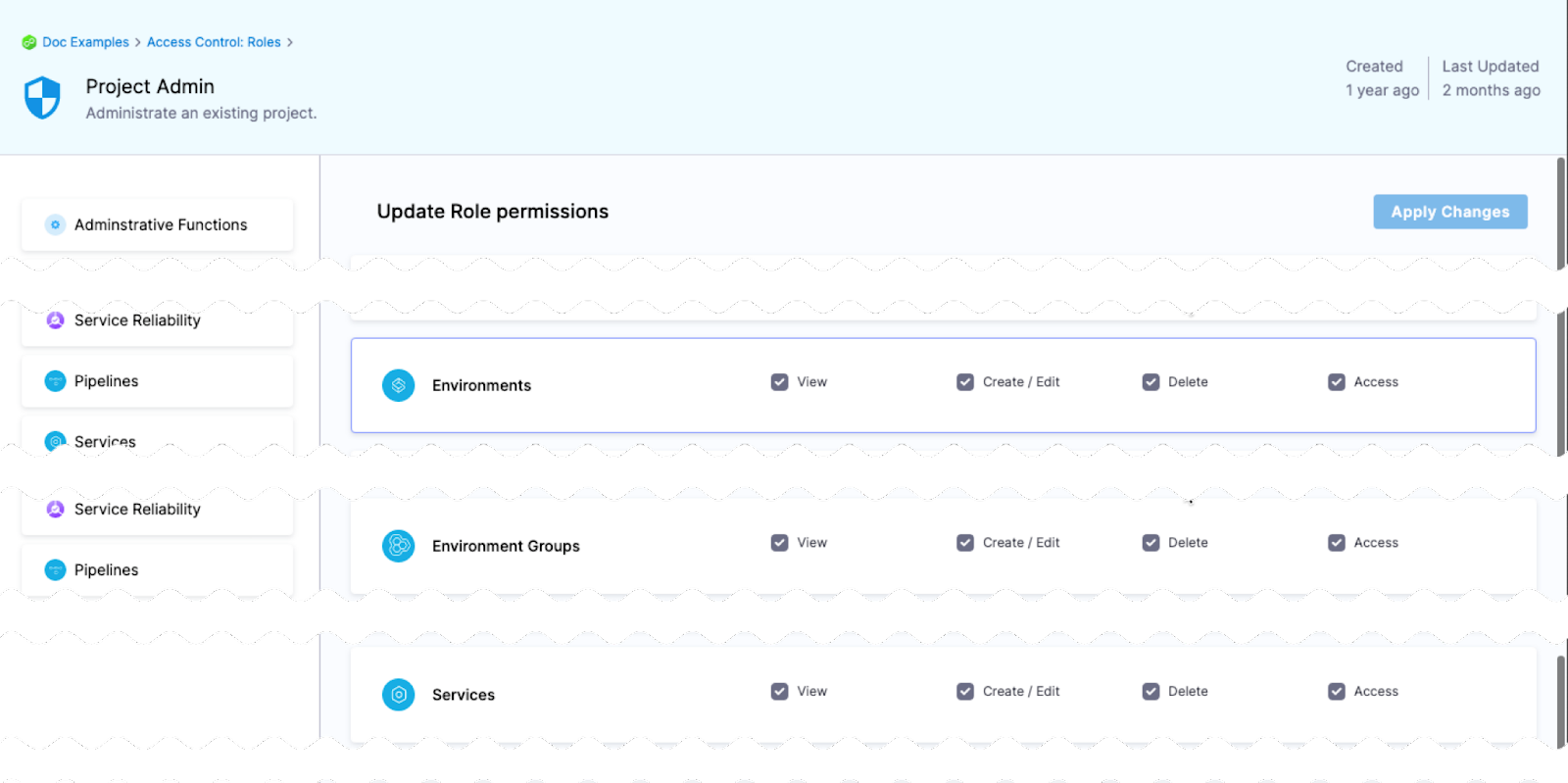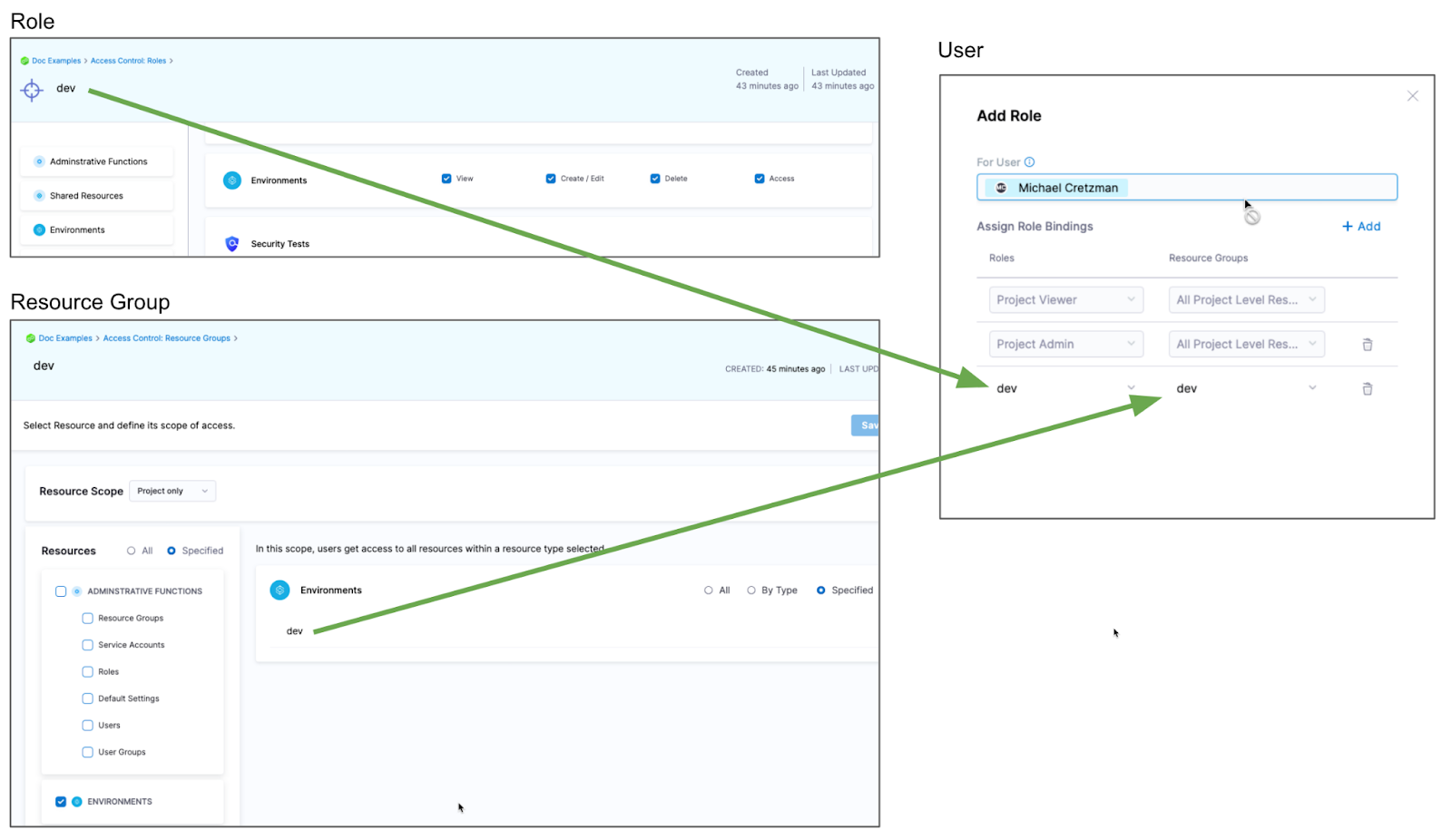Services overview
A Harness service represents what you're deploying.
Harness services are deployed to Harness environments. Select Environments to see the environments in this project.
Select Services to see the service list for your project. From this dashboard, you can create new services and monitor your existing ones.
Creating services
You can create services in Services, when you're building your pipelines, or at an account or organization levels.
When you create a service in a pipeline, it's automatically added to Services. You can add the same service to as many pipelines as you need.
For more information, go to create services.
Clone Services
You can clone services across scopes i.e from one project to another, project to organization, account to project etc.
Select More Options (⋮). Select Clone.

Once you click on Clone, you will see Clone Service setting:-
You can change the Name add tags and description as well for this clone service.
You can change the Organization and Project as well where you want to clone the service.
You can choose between Inline and Remote to set up your service. Choose Inline when you want your service to be stored in Harness. Choose Remote when storing your service in a Third-party Git repository or Harness Code Repository.
To close a remote service to an inline service, you have to specify the source branch where the remote service is stored.

To Clone an inline service or remote service to a remote service, you must specify the target repository, Harness Code Repository, to store the service in the Harness repository or Third-party Git provider, to store the service in a third party Git provider, define the Git Connector if Third-party Git provider. Specify the Repository name, the YAML path, and the commit message.

When you clone a service from a different organization or project, the connector referenced in the service doesn't get cloned and must be explicitly created.
Services RBAC
Go to RBAC in Harness for examples of RBAC use cases for services.
Access permission to deploy to a service
One of the most important advantages of services is the ability to define roles that determines who can deploy them.
In order for a role to allow deployments using services, the role must have the access permission enabled for services.

The View, Create, Edit, Delete, and Manage permissions enable you to deploy a service.
If a role does not have the Access permission for Services, a user or user group assigned that role cannot deploy any service.
Restrict access to specific services for a user or user group
You can restrict a user or user group to using specific services only. The process is the same for services and environments.
Let's look at an example using environments.
If you want to restrict a user or user group to deploy to a specific environment only, do the following:
- Create a resource group and select the environment.
- Create a role and give the user or user group permissions. The Access permission is needed for deployments.
- Assign the role and resource group to the user or user group.

Deleting a Service in Harness
For information on deleting services in Harness, go to Deleting a Service in Harness in Service-based licensing and usage for CD.